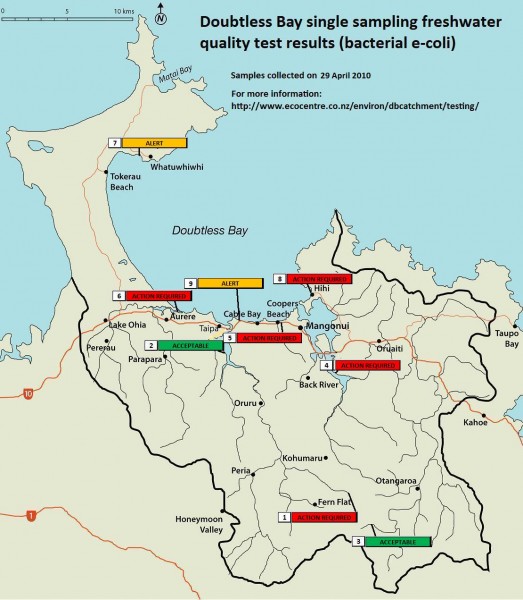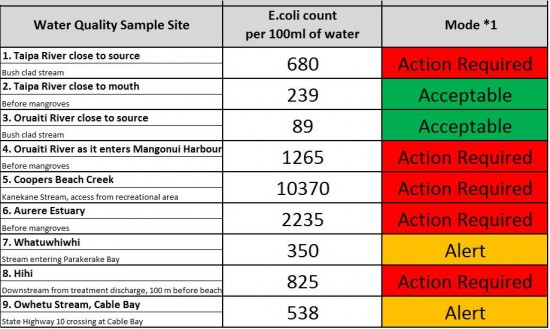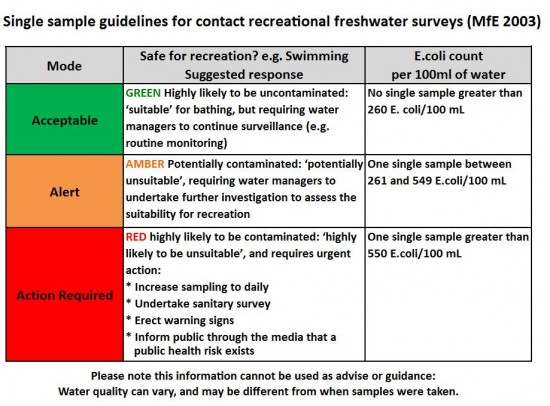Alter-Natives Wholesale Nursery
Native Plant Fund
9,300 Native Plants for Free.
Given away as 93 lots of 100
Total value of $24,180
Entry form at the bottom of this page
Entries opens 1st March and closes 12th May 2010.
Drawn Thursday 13th May 2010.
Why?
The primary purpose of the Alter-Natives Wholesale Nursery Native Plant Fund is to support/sustain the environment by providing native plants for projects which will increase and improve the habitat for our native wild life such as birds and insects and improve water quality in streams and wetlands for improved habitat for fish etc. The extended value of this project is widespread for the environment and the community.
For example:
Revegetation improves the underground water table; reduces rainfall runoff which in turn reduces flooding and silting of waterways including harbours.
Revegetation creates a forest habitat for our native wildlife which has suffered from the excessive slash and burn of past agriculture practices.
Revegetation will have long term positive effects for our international reputation as a nation that is prepared to spend time and money on the environment.
We do not give away money or labour to support your project, but of the 400,000 plants we produce this year, we have decided it appropriate that we give 9,300 of them away.
History of the Fund:
2009: The area for our third year was extended to include projects which were in the Kaipara Harbour water catchment and the draw dates were brought forward to April. There was less marketing of the fund and we had fewer entries than the year before. However of the 85 received, 75 lots went to good projects as far away as South Head. NRC contributed $3375.
2008: Our second year saw Northland Regional Council contribute $2000 which added another 1000 plants to make a total of 6000 to give away. We had 205 entries for 60 lots. Once again entries and winners were quite diverse. Unfortunately we had 5 entries arrive some days late.
2007: This was the beginning of the fund with 117 entries for 50 lots of 100 plants which was fully funded by Alter-Natives Wholesale Nursery. Entries ranged from children, retired people, schools, farmers and conservation groups. It inspired us to run this fund each year.
We want to thank:
Northland Regional Council for their financial support by contributing $6,750 to the Native Plant Fund in 2010. The NRC contribution means we can give away more plants.
Conditions of Entry:
Almost anybody can enter for a lot of 100 native plants as there are few criteria to be met.
The primary purpose of the planting MUST be for the improvement of the environment.
Applicants can be:
Private land owners.
Schools or other Education providers.
Clubs or Youth groups.
Community trusts or Land Care groups which are responsible for the care of Community, QEII or DOC land.
Applicants MUST:
Site must be in either the Far North, Whangarei, Kaipara, or Rodney Districts.
Apply only once for each project they wish to undertake each year. That means you can apply each year for the same project if it is ongoing.
Applicants must NOT be:
Property developers or speculators.
Plants MUST be planted:
Fenced off or protected from livestock.
In a way that creates a small forest or joins an existing forest or
Following along a stream or forms a wetland or around a dam.
Plants must NOT be:
For hedges planted in 3 or less rows.
For compliance for council requirements such as resource consent or effluent fields (ETS field).
What plants do you get?
All 93 lots of 100 plants are in 9cm tubes (1/2 litre pots) which are a good size for revegetation.
There are four differing environmental zones of which each will recieve different plants as specified below.
|
Coastal areas
10 Manuka (Lepotspermum scoparium)
10 Kanuka (Kunzea ericoides)
10 Karamu (Coprosma robusta)
20 Harakeke, Flax (Phormium tenax)
10 Ti kouka, Cabbage tree (Cordyline australis)
10 Karo (Pittosporum crassifolium)
10 Pohutukawa (Metrosideros excelsa)
5 Akeake (Dodonaea viscosa)
5 Koromiko (Hebe stricta)
10 Papaumu (Griselinia littoralis)
|
Wetland areas and Lowland flats - fresh water
10 Manuka (Lepotspermum scoparium)
10 Kanuka (Kunzea ericoides)
10 Karamu (Coprosma robusta)
20 Harakeke, Flax (Phormium tenax)
10 Ti kouka, Cabbage tree (Cordyline australis)
5 Wiwi (Juncus gregiflorus)
5 Purei (Carex secta)
5 Carex virgata
10 Giant umbrella sedge (Cyperus ustalatus)
10 Manatu (Plagianthus regius)
5 Kahikatea (Dacrycarpus dacrydioides)
|
|
Saltmarsh areas and Tidal river banks - Salt water
10 Manuka (Lepotspermum scoparium)
10 Kanuka (Kunzea ericoides)
10 Karamu (Coprosma robusta)
20 Harakeke, Flax (Phormium tenax)
10 Ti kouka, Cabbage tree (Cordyline australis)
20 Makaka (Plagianthus divaricatus)
5 Wiwi (Juncus gregiflorus)
10 Giant umbrella sedge (Cyperus ustalatus)
5 Coastal tree daisy (Olearia solandri)
5 Manatu (Plagianthus regius)
|
Other areas - such as inland hillsides
10 Manuka (Lepotspermum scoparium)
10 Kanuka (Kunzea ericoides)
10 Karamu (Coprosma robusta)
20 Harakeke, Flax (Phormium tenax)
10 Ti kouka, Cabbage tree (Cordyline australis)
10 Karo (Pittosporum crassifolium)
5 Totara (Podocarpus totara)
5 Akeake (Dodonaea viscosa)
10 Koromiko (Hebe stricta)
5 Houhere (Hoheria populnea)
5 Papaumu (Griselinia littoralis)
|
Please return all empty tubes and trays to us for re-use.
How to enter:
Fill in the simple entry form at the end of this document and post it to:
Native Plant Fund
Alter-Natives Wholesale Nursery
571 Ormiston Road
RD2, Waipu, 0582
We must receive entries by Wednesday 12th May 2010. Note that we are on rural delivery so it usually takes 2 or 3 days to receive mail.
How the winners are drawn:
On Thursday 13th May all correctly filled in entries will by read by representatives from the Department of Conservation and the Northland Regional Council and the 93 winning entries decided. There is some consideration to the merit of the projects with no hard and fast rules as to who will receive plants. Winners will be notified by phone over the next few days and their names and areas will be listed on our web site.
When to collect the plants:
Collection of plants can take place from Friday 14th May until Friday 23rd July from Alter-Natives Wholesale Nursery at 571 Ormiston Road, Waipu.
Please note that we would prefer not to store your plants after 23rd July.
Recommendations for planting:
There is several ways to do revegetation and each way has pros and cons which you’ll need to weigh up for yourself so you can select the method that will suit your needs best.
The basics of revege:
Site Prep: Preparation of the site could be either; heavy grazing by livestock, mowing/mulching with a tractor, spraying which may or may not be followed with weed-matting, or you may not need to do anything, such as often the case with supplementary plantings.
Mulching: Placing mulch around the plants will aid in their growth by adding nutrients as it decays and reduces ground heating during summer and increasing moisture retention.
Plant Spacing: Plant at about 1m to 2m apart. Plant flaxes at or near the edge not in the middle if planting a forest area. This amount of plants will create a forest of 100 to 400 square metres (depending on spacing).
Staking: If you are in a windy area then you should stake the plants or cut the top third to half off each tree. It is important so that the roots get well established and blowing around will stop that happening.
When to Plant: Plant as soon as you are able to as this will allow maximum time for the plant roots to develop before summer arrives. Autumn (May, June) is the main planting season, particularly for big jobs.
Maintenance: Keep the weeds and grass under control around the plants for the first year so plants get established.
Pukeko problems: You can stop Pukekos from pulling out plants by pushing 1 or 2 stakes diagonally through the root ball of the plant (this requires a 1/2 litre size pot or bigger to be effective). If they are very hungry they will persist to dig them out.
HAPPY PLANTING. From Ian & Cindy Fox and the Team at Alter-Natives.
www.alter-natives.co.nz
Download the Entry Form in PDF
Download the whole document in PDF
Download the Entry Form in Microsoft Word 93. You can type on this one and then print it.
Download the whole document in Microsoft Word 93. This one is read-only (and print).
If you have problems opening this file please click here to check you are using the latest Adobe reader







